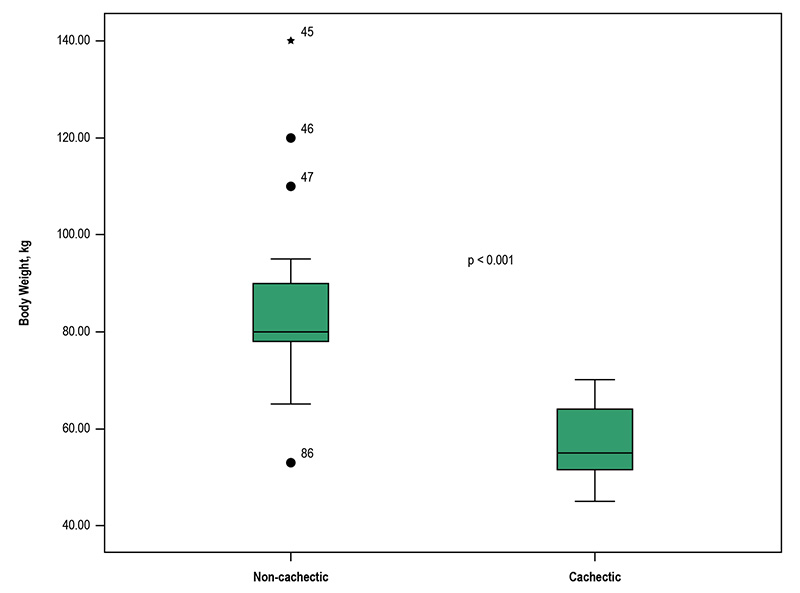Volume 111, Nº 1, July 2018
DOI: http://www.dx.doi.org/10.5935/abc.20180109
ORIGINAL ARTICLE
Adropin and Irisin in Patients with Cardiac Cachexia
Ali Kemal Kalkan
Huseyin Altug Cakmak
Mehmet Erturk
Kübra Erol Kalkan
Fatih Uzun
Omer Tasbulak
Vesile Ornek Diker
Suleyman Aydin
Ahmet Celik

Abstract
Background: Cardiac cachexia is an important predictive factor of the reduction in survival of patients with heart failure with reduced ejection fraction.
Objectives: The aims of the present study were to evaluate adropin and irisin levels in cachectic and non-cachectic subjects and the relationships between the levels of these proteins and clinical and laboratory parameters in patients with HFrEF.
Methods: The clinical records of patients who were admitted to the cardiology outpatient clinic for heart failure with reduced ejection fraction were screened. Cachectic patients were identified and assigned to the study group (n = 44, mean age, 65.4 ± 11.2 y; 61.4% men). Heart failure with reduced ejection fraction patients without weight loss were enrolled as the control group (n = 42, mean age, 61.0 ± 16.5 y; 64.3% men). The serum adropin and irisin levels of all patients were measured. A p-value < 0.05 was considered significant.
Results: Serum adropin and irisin levels were significantly higher in the cachexia group than in the controls (Adropin (ng/L); 286.1 (231.3-404.0) vs 213.7 (203.1-251.3); p < 0.001, Irisin (μg/mL); 2.6 (2.2-4.4) vs 2.1 (1.8-2.4); p = 0.001). Serum adropin and irisin levels were positively correlated with brain natriuretic peptide (BNP) levels and New York Heart Association (NYHA) class and negatively correlated with body mass index (BMI) and serum albumin levels (all p values: < 0.001). In a multivariate analysis, adropin was the only independent predictor of cachexia in the heart failure with reduced ejection fraction patients (OR: 1.021; 95% CI: 1.004−1.038; p = 0.017).
Conclusions: The results suggest that adropin and irisin may be novel markers of cardiac cachexia in heart failure with reduced ejection fraction patients. Adropin and irisin are related with the severity of heart failure. (Arq Bras Cardiol. 2018; 111(1):39-47)
Keywords: Cachexia / complications; Heart Failure / physiopathology, Hypertrophy, Left Ventricular; Ventricular Function, Left; Adropin; Peptides; Hormones.















